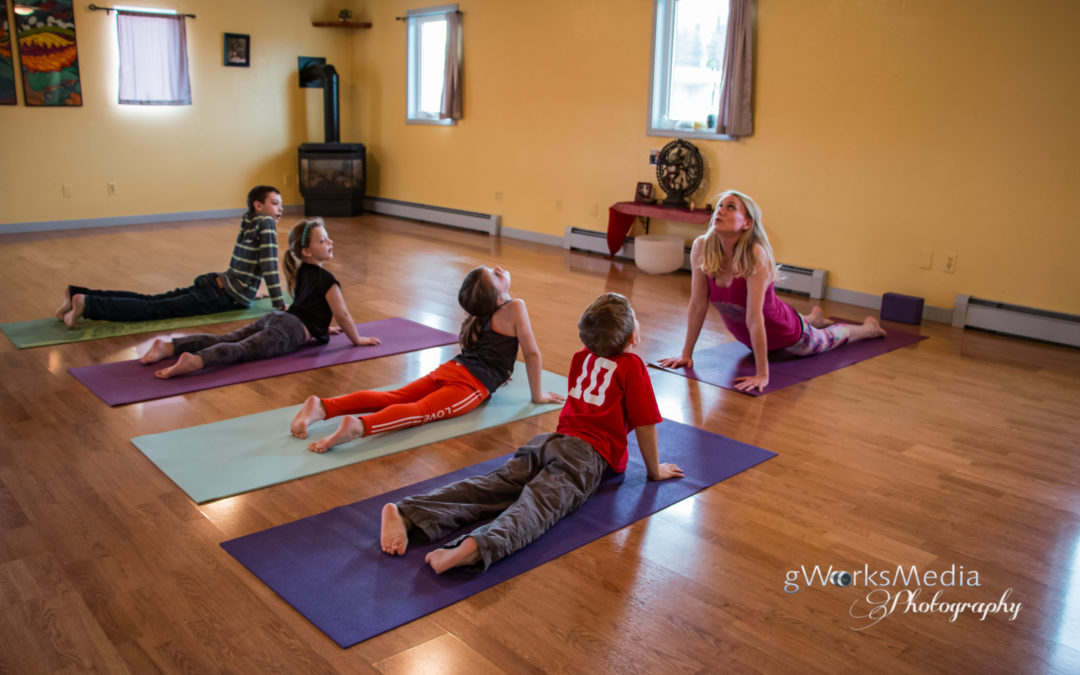Kids today live in a busy world of school, homework, sports, and activities designed to keep them busy and nurture their growing minds and bodies. But doing nothing is important, too. Well, not really nothing, but taking time to relax the mind and body, stepping away from the pressures of the world, and learning to be still and calm are also important to healthy development.
Yoga can help children learn techniques for relaxation, frustration and anger management, and handling stress and anxiety. Physically, it also helps with flexibility, strength, coordination and body awareness.
“Proper breathing is a great way to energize, learn concentration and reduce stress,” said Dietrich Johnson, a children’s yoga instructor in Anchorage.
“Standing poses build posture and strength. Balancing poses develop focus, strength, balance and poise. Difficult poses build self-esteem by teaching children that they can achieve what they set out to do all on their own. And relaxation poses reduce stress and teach kids how to focus.”
Pretending to be animals is a good way of introducing basic yoga poses, said Johnson.
“Luckily, most children love to talk, and they love to move — both of which can happen in yoga,” she said. “Children will jump at the chance to assume the role of animals, trees, flowers, warriors. Your role is to step back and allow them to bark in downward dog pose, hiss in cobra, and meow in cat stretch. They can also recite the ABCs or 123s as they are holding poses.”
Many yoga studios offer classes specifically for kids, but if there are none close by, you can still get the benefits of yoga by practicing with your children at home. It doesn’t have to be formal or even planned ahead of time. With just a few simple poses and enough space to spread out arms and legs, kids and parents can both have fun while benefitting from the practice.
“The first step is to just work on taking a deep breath in, slowly through your nose, and then slowly release your breath through your mouth,” said Johnson. “While you and your child are doing this, encourage your child to try to only think about the breath coming in, warming up, and going back out. This can be a life skill to help your child relax.”
After a few minutes of breathing, try some simple poses together. There are many good books, websites and videos available that demonstrate simple kid-friendly poses (see the list below). Let it be a fun, relaxed experience, and let them lead the practice, if possible, Johnson said.
“Sometimes my kids want to do poses and try new ones,” she said. “Sometimes they like to do yoga to songs. Sometimes they want to play games like Toe-Ga where we pick up pom-poms with our toes. And sometimes, they just want to do some guided relaxation.”
As your children become more comfortable with the practice, introduce some more challenging poses, ask them to plan a series of three poses in a flow so they can see how poses can fit together, or read a yoga book together and try out the poses as they are presented.
Two or three 20-minute yoga sessions a week can help most children, even those living with special needs, become more calm and handle life’s frustrations better, said Johnson.
“I have a daughter with mild-to-moderate autism and a stepson with ADHD,” said Johnson. “Yoga has helped them with self-regulation and muscle tone, and with techniques they can use to help them calm down if they have anxiety.”
Photograph courtesy of Dietrich Johnson
Peaceful Piggy Meditation
Angry Octopus (guided relaxation for anger management)
Sitting Still Like a Frog: Mindfulness Exercises for Kids (and Their Parents)
ABCs of Yoga for Kids
Good Night Yoga: A Pose-by-Pose Bedtime Story
Yoga Pretzels
Kids’ Yoga Deck: 50 Poses and Games
YOGI: Yoga Cards for Joyful Learning

